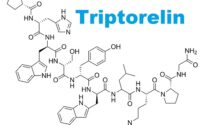Gonadorelin
 What is Gonadorelin?
What is Gonadorelin?
Gonadorelin: A Beacon in the Landscape of Reproductive Health
In the intricate ballet of the human endocrine system, each hormone plays a pivotal role, orchestrating a myriad of physiological processes that maintain the delicate equilibrium of our health. Gonadorelin, also known by its more formal appellations, Gonadotropin-releasing hormone (GnRH) or Luteinizing Hormone-Releasing Hormone (LHRH), is a seminal protagonist in this complex interplay, particularly in the domain of reproductive health. Its discovery and subsequent synthetic manufacture have heralded a new epoch in the treatment of fertility issues, offering hope to countless individuals yearning for parenthood, as well as providing a strategic tool in the management of hormone-sensitive conditions.
The journey from the discovery of Gonadorelin to its therapeutic application is a testament to the marvels of medical science. Initially, its role was deciphered through a series of elegant experiments, laying the groundwork for the synthesis of Gonadorelin for clinical use. The synthesis of this hormone has enabled the development of analogues—variations of the natural molecule with enhanced potency or duration of action.
Most importantly
In the realm of fertility treatments, Gonadorelin and its analogues represent a cornerstone in assisted reproductive technologies (ART). The ability to orchestrate the timing of ovulation is crucial in these procedures, allowing for the synchronized collection of eggs and their subsequent fertilization and implantation.
Beyond its role in fertility, Gonadorelin analogues find utility in the management of hormone-sensitive conditions. For instance, in individuals diagnosed with precocious puberty, where the premature activation of the hypothalamic-pituitary-gonadal axis leads to early sexual development, long-acting formulations can suppress this premature activity, allowing for a more physiologically timed puberty. Conversely, in the treatment of certain cancers that are responsive to sex hormones—prostate cancer in men and breast cancer in some women—Gonadorelin analogues can suppress the production of these hormones, thereby inhibiting cancer growth.
Therapeutic
The therapeutic potential of Gonadorelin extends into areas of endocrine research that are still being explored. Its role in conditions such as endometriosis, where suppression of ovarian hormone production can alleviate symptoms, and in the realm of transgender health care, offering hormone suppression as part of hormone therapy, highlights the versatility and importance of this hormone in contemporary medicine.
In reflection, Gonadorelin represents more than just a molecule; it is a symbol of the progress and promise of endocrinology and reproductive medicine. From its role in basic physiological processes to its application in treating complex medical conditions, this hormone exemplifies the fusion of biological insight with therapeutic innovation. As research unfolds, the future may hold even broader applications for Gonadorelin and its analogues, underscoring the continuing importance of this pivotal hormone in the saga of human health.
Conclusion
Gonadorelin is not merely a cog in the vast machinery of the endocrine system but a key that unlocks a multitude of therapeutic possibilities. Its journey from a natural signal to a synthesized drug elucidates the power of scientific inquiry and innovation, offering hope to many and illuminating the paths to managing conditions once deemed insurmountable. In the grand narrative of medicine, Gonadorelin is a beacon, guiding the way toward understanding and harnessing the complexities of the human body for the betterment of health and well-being.


